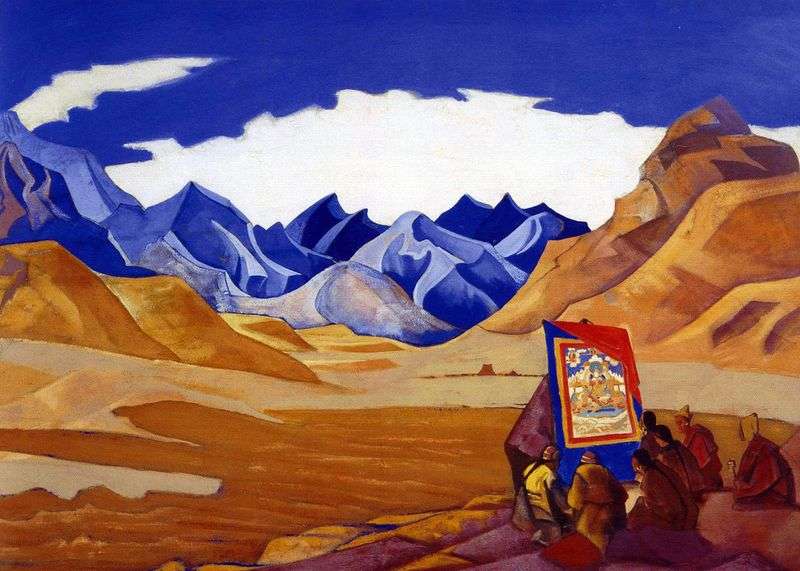
The painting “The Banner of the Future” is one of the most significant in the Maitreya series. In this canvas, the artist only a hint creates a sense of the presence of the Reserve country. “Having passed four snow passes already in the desert highlands, we again saw a picture of the future.
In a valley surrounded by high sharp rocks, three caravans came together and stopped for the night. At sunset, I noticed an unusual group. A multi-color Tibetan picture was placed on a high stone, in front of it was a tight group of people in deep respectful silence. A lama in red robes and in a yellow hat, with a stick in his hand, indicated something to the audience in the picture and said rhythmically to the explanation. Approaching, we saw the familiar Shambala tank. Lama sang about the countless treasures of the Lord of Shambhala, about His wonderful ring, which possesses great powers. Further, pointing to the battle of Rigden-Djapo, the lama said that without mercy all evil creatures would die before the power of the just Lord… “, N. K. Roerich wrote in his travel notes.
What he saw found a picturesque embodiment in the film “The Banner of the Future.” On the edge of the desert, surrounded by mountains, a group of Tibetans settled near a stone with a tank. People are fascinated by the lama, who tells about the Sacred Country and its Lord. The sonorous silence of the desert enhances the intimate significance of what is happening.
For the external outline of the plot guesses a deep esoteric meaning. The composition of the picture resembles a kind of bowl formed by rocky spurs. It is crowned by a white space above the tops of the lilac-blue mountains, which can be taken for a cloudy ridge. And perhaps this is an allusion to the glow of Shambhala, the herald of which is a bright colorful tank…
“Camel bells are ringing. Long desert passages. A song of Shambhala rushes over the desert again. There are lifeless rocks and piles of stones, and the frosty highlands around, but the signs of Shambhala do not leave you.” Among such signs are ancient cave temples, carved high in the mountains. Their travelers met at the Sangju Pass, in Sikkim, at Kanchenjunga. “We went noticeably uphill against the stream of a mountain stream. The gorge gradually narrowed to the left, they saw caves several floors in the yellow sandstone mountain… Approaches to many caves completely disappeared. The entrances remained high, like eagles’ nests…”, Roerich noted.
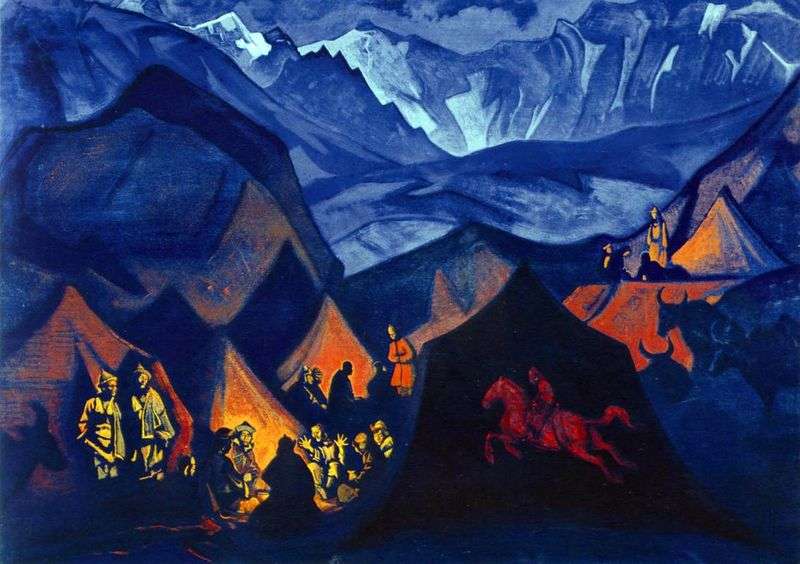 Whispers of the Desert by Nicholas Roerich
Whispers of the Desert by Nicholas Roerich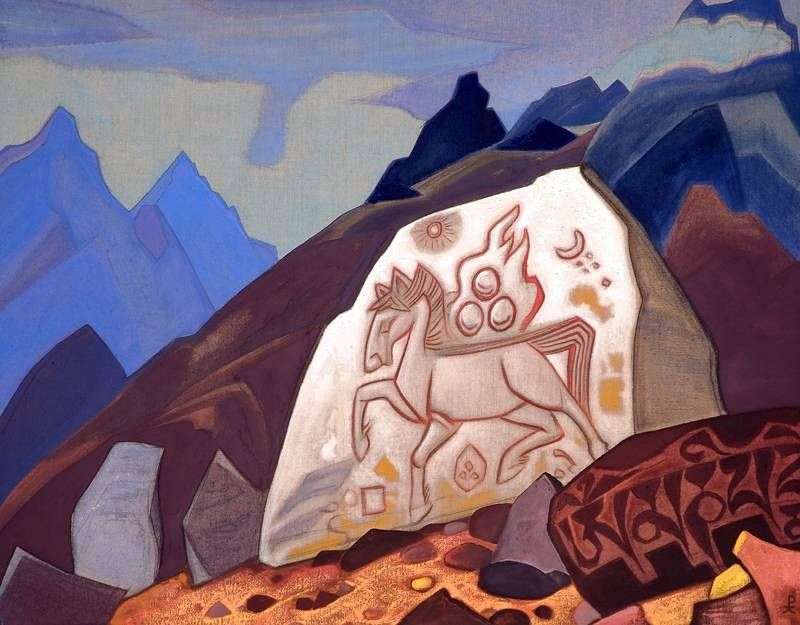 White Stone by Nicholas Roerich
White Stone by Nicholas Roerich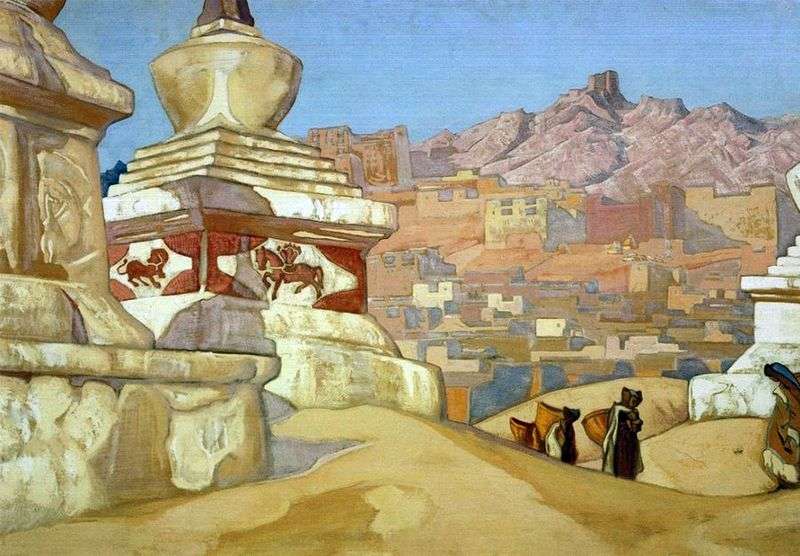 Red Horseman by Nicholas Roerich
Red Horseman by Nicholas Roerich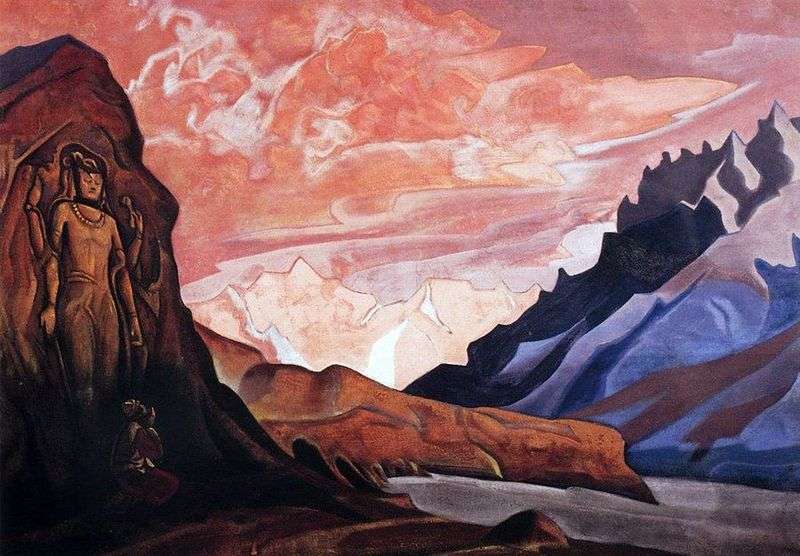 Maitreya Winner by Nicholas Roerich
Maitreya Winner by Nicholas Roerich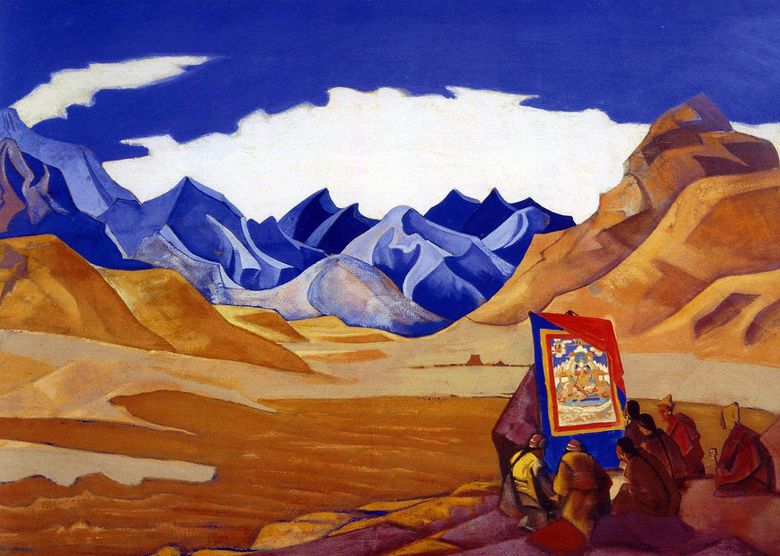 Bannière de l’avenir – Nicholas Roerich
Bannière de l’avenir – Nicholas Roerich Sarakha by The Blessed Arrow – Nicholas Roerich
Sarakha by The Blessed Arrow – Nicholas Roerich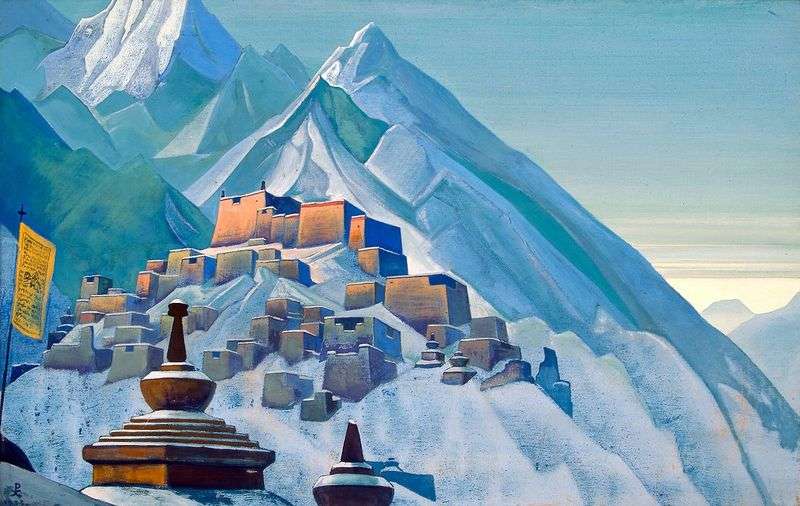 Tibet. Himalayas by Nicholas Roerich
Tibet. Himalayas by Nicholas Roerich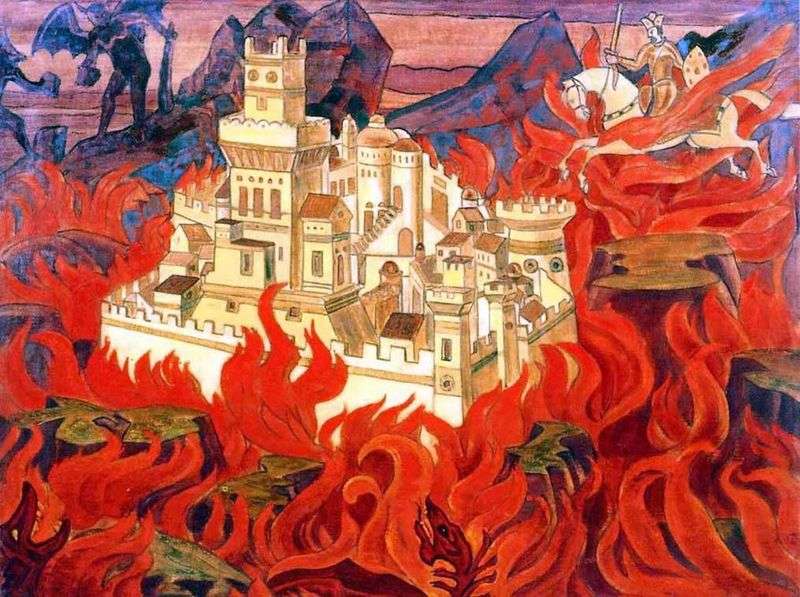 Purest Hail by Angers to Enemies – Nicholas Roerich
Purest Hail by Angers to Enemies – Nicholas Roerich